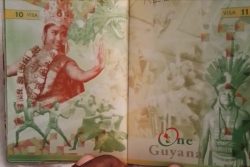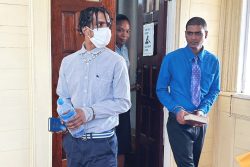Dear Editor,
Guyana’s High Commissioner to the UK, F. Hamley Case, has succeeded in getting the slave-era ‘Demerara Bell’ back to Guyana from Cambridge University after a lunchtime tete-a-tete with the Master of St Catharine’s College, Professor Sir Mark Welland, two weeks ago
The bell came from plantation Anna Catherina, West Bank Demerara. It was inscribed ‘De Catherina 1772’ and was believed to have been a plantation bell, used for regulating the work schedules of slaves on the sugar plantation. It was found in the mud of the Demerara River nearly two centuries later.
In 1960, it was donated to the college by Edward Goodland, who had studied at St Catharine’s from 1930-33. He was appointed as the technical director at Bookers Sugar Estates in the then British colony of British Guiana in 1958.
The ‘Demerara Bell’ was then put up outside the Porters’ lodge in ‘St Cats’ until 1994 when it was moved to an accommodation block. In May 2019, it was hidden from view after a furore over Cambridge’s links to the slave trade. The university is currently reassessing those links.
Also in May 2019, the governing body and students of St Catharine’s College agreed unanimously that the bell, which had been housed in a prominent position overlooking the centre of the college, and which was recently confirmed to have originated from a slave plantation in Demerara, Guyana, should be donated to the Rijksmuseum, Amsterdam, to be displayed as part of a major exhibition focussed on slavery in the Dutch colonial period. The exhibition will be held at the Rijksmuseum between September 2020 and January 2021.
High Commissioner Case went on August 9th to ‘St Cats’ for lunch with the Master Professor Sir Mark and his wife Lady Welland, librarian Dr Colin Higgins and Senior Tutor Dr Miranda Griffin. He persuaded them that after the Rijksmuseum exhibition, it should then be returned home to Guyana. The exact date of that is not known. An era goes full circle.
Yours faithfully,
John Mair








